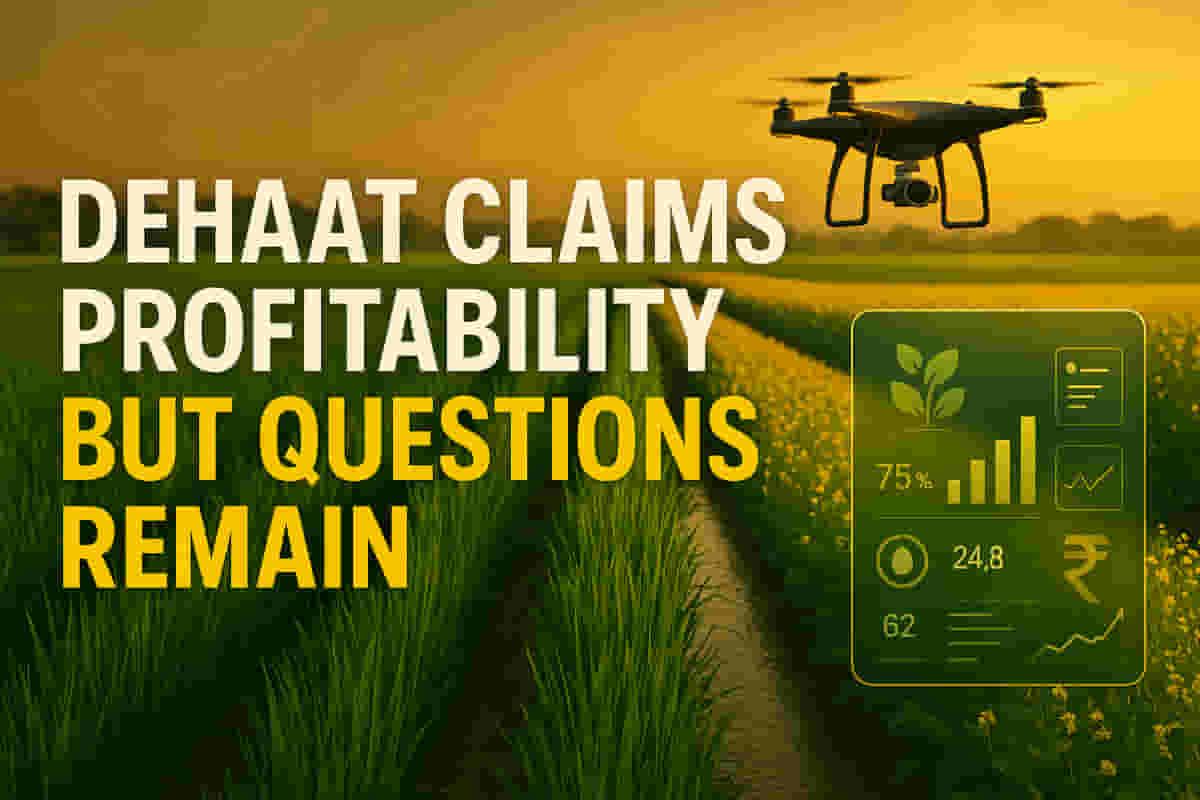DeHaat Claims First Profitable Year, But Operational Losses and Slow Growth Raise Sector Concerns
Agriculture
|
30th October 2025, 1:35 PM

▶
Short Description :
Detailed Coverage :
DeHaat, a prominent Indian agritech startup, announced its first-ever profitable year for FY25, reporting a profit of INR 369 crore. However, a closer look reveals that this profit was largely driven by non-cash gains. Operationally, the company still recorded a loss of approximately INR 207 crore, despite surpassing INR 3,000 crore in revenue. The startup aims to achieve full operational profitability in FY26, having reached EBITDA breakeven in the first quarter of FY26. This marks a shift from FY24, when DeHaat posted a net loss of INR 1,113.1 crore.
Impact: This news has a moderate impact on the Indian stock market, particularly on companies related to the agriculture and technology sectors. While DeHaat is not publicly traded, its financial performance and the associated commentary on the agritech sector's profitability can influence investor sentiment towards similar listed companies. The challenges highlighted, such as low margins, operational losses, and scaling difficulties, suggest potential headwinds for the broader agritech ecosystem. Investors will be watching how other agritech players navigate these complexities and whether the sector can achieve sustainable profitability. The reliance on trading margins from produce aggregation and the difficulties in the input business point to systemic issues within the sector that could affect related public entities. Rating: 6/10
Difficult Terms: * FY25 (Fiscal Year 2025): The financial year running from April 1, 2024, to March 31, 2025. * Non-cash gains: Financial gains that do not involve the actual inflow of cash, often related to accounting adjustments like revaluation of assets or deferred tax benefits. * Operational loss: A loss incurred from a company's normal business activities before accounting for interest, taxes, depreciation, and amortization. * EBITDA breakeven: Earnings Before Interest, Taxes, Depreciation, and Amortization become zero, meaning the company's core operations are covering their costs before these specific expenses. * FY24 (Fiscal Year 2024): The financial year running from April 1, 2023, to March 31, 2024. * YoY growth: Year-over-year growth, comparing a period's performance to the same period in the previous year. * Market linkage platform: A business model that connects buyers and sellers, in this case, farmers with agri-input suppliers and buyers of their produce. * Full-stack model: A business that offers a complete set of services or products covering all aspects of a particular industry or process. * Agri-inputs: Products used in agriculture, such as seeds, fertilizers, pesticides, and animal feed. * Revenue: The total income generated by the sale of goods or services. * Trading margins: The profit made from buying and selling goods at different prices. * GST: Goods and Services Tax, a consumption tax levied on the supply of goods and services. * D2C model: Direct-to-consumer, where a company sells its products directly to the end customer, bypassing intermediaries. * Middleman: An intermediary who facilitates transactions between two other parties. * Structural challenges: Deep-rooted problems within an industry's framework or economic system. * Policy-dependent sectors: Industries whose operations are heavily influenced by government regulations and policies. * Unit economics: The revenue and cost associated with producing and selling a single unit of a product or service.